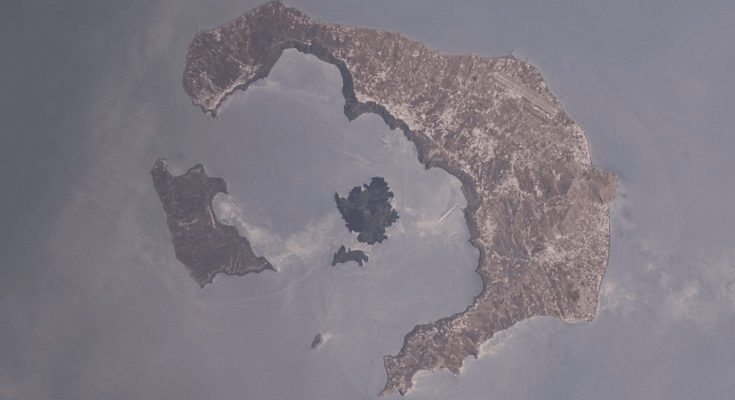
Famously, the eruption of Thera (or Santorini) was one of the largest volcanic eruptions in human history. It had a devastating effect on the Minoans, and there is strong evidence that it ultimately led to their gradual downfall.
However, what effect did the eruption of Thera have on the Egyptians? Did the effects of the eruption even reach Egypt?
The eruption of Thera in Egyptian chronology
The exact date of the eruption of Thera is something that scholars continue to debate. This is due to conflicting evidence from radiocarbon dating and ice core evidence. Nevertheless, its relative date within Egyptian chronology is absolutely secure.
The reason we can say this is that archaeologists have found various items made of pumice (rock formed from volcanic material) in Egypt from one specific time period. This is the reign of Ahmose I. The pumice in question matches that found on Thera itself, showing that it came from the Minoan eruption.
Therefore, we can be absolutely sure that the eruption of Thera occurred in the reign of Ahmose I of Egypt, regardless of when the actual date really was. However, the weight of evidence places it in the 16th century BCE.
The effects of the eruption of Thera among the Egyptians
The fact that so much pumice ended up in Egypt shows that the eruption of Thera did have at least some impact on the Egyptians. However, can we be more specific than this? For example, do we know whether or not there were notable quantities of ash raining down on Egypt, as suggested by some theories?
As so happens, there are several documents from that very era of Egypt which shed some light on this. One of these is known as the Ebers Papyrus. This contains information on hundreds of remedies for various ailments on the body. According to one study, 32 percent of the ailments in this document are consistent with effects from a volcanic eruption.
Since this text dates to around 1550 BC, the reign of Ahmose I, it is a perfect chronological match for the eruption of Thera.
Burns among the Egyptians from the eruption of Thera
One of the remedies in the Ebers Papyrus is about how to treat blisters alongside burns that have emerged all over the body. The description of this particular ailment suggests that “the agent was present in a different physical form than as a particulate, and was
probably diluted in a liquid,” according to the aforementioned study.
This is consistent with the rainfall that would have occurred soon after the eruption. As one doctor explained: “The very first precipitation after the eruption would have dissolved large amounts of the suspended ash, resulting in a very acidic rainfall.”
This is just one example, but it is notable that there are numerous remedies for burns in this text and contemporary ones, such as the Hearst Papyrus. It seems to indicate that the Egyptians did suffer notably from the eruption of Thera.
Ash in Egypt
Evidently, there was enough volcanic ash falling down on the country for many of the Egyptians to receive burns and other ailments associated with exposure to volcanic ash. Other examples would include lung issues, which those medical documents from Ahmose’s reign also deal with.
The fact that ash really did fall in Egypt was confirmed by a study published in 1986, conducted by Daniel Jean Stanley and Harrison Sheng. These researchers uncovered traces of volcanic ash in the eastern Delta region. Chemical analyses showed that this volcanic material was consistent with ash from Thera.
Therefore, the evidence is clear that the eruption of Thera did have an effect on the Egyptians. Volcanic ash did fall on the country, and this may well account for the remedies for treating burns during the reign of Ahmose I.



